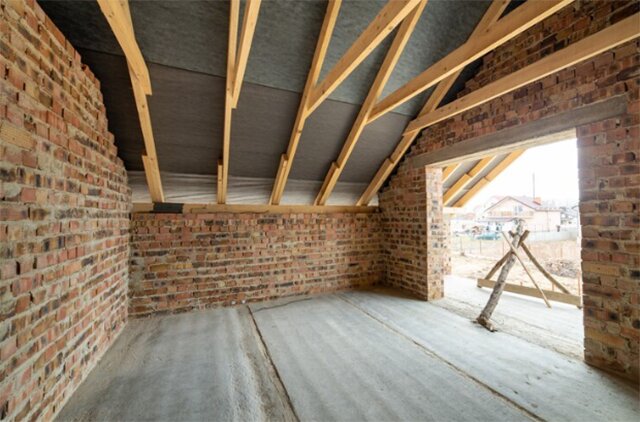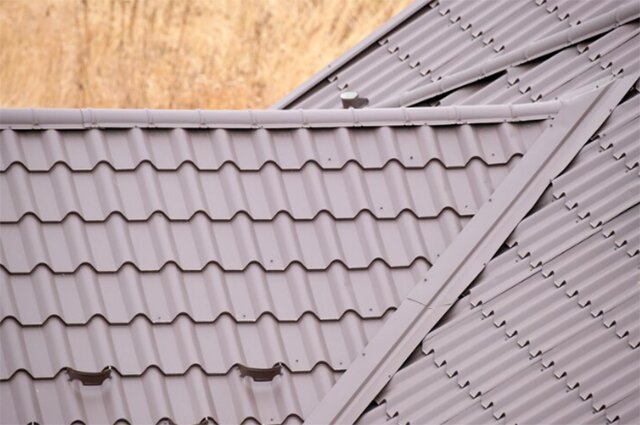Have you noticed some roof damage lately and are wondering how much it will cost to repair? You’re not alone! Many homeowners grapple with the same question when faced with roof repairs. It’s important to know what to expect so that you can budget for the job properly and make sure you get a fair price. In this article, we’ll discuss why roof repair is so expensive and offer tips on how to save money without getting ripped off. So keep reading if you want to learn more about how much roof repair really costs!
Disclaimer: This article provides general information about roof repair costs and is not intended to provide specific advice. While we hope that the information provided here will be helpful to you, we strongly suggest that you consult with a licensed roofing specialist for a more accurate assessment of your specific circumstances. In particular, if your home is in need of major repairs, it is best to get an expert opinion. If you are in the Spokane, WA area, we recommend contacting Advance Roofing LLC for the highest standard of quality roofing solutions. We have been proudly serving this area for many years and are always happy to help!
What is Roof Repair?

When it comes to homeownership, one of the most significant investments a person makes is in their roof. However, issues that can arise due to age, wear and tear, or weather damage can result in costly repairs. Knowing about the range of costs associated with roof repair can help homeowners budget and plan accordingly, allowing them to make informed decisions and avoid getting ripped off by unscrupulous contractors. In this article, we delve into the world of roof repair to help you understand the costs involved and ensure you make the best choices for your home and budget.
Why You Need to Know About Roof Repair Costs
Understanding the costs associated with roof repair and replacement is crucial for homeowners. This knowledge makes it easier to make informed decisions about their choices and actions concerning their home’s roof. By knowing how much to expect in repair costs, it becomes easier to budget and prioritize necessary repairs.
Factors that contribute to the cost of roof repair include the type of material used for repair, the extent of damage, and the repair type. Some roofing materials like metal or slate can be more expensive to repair or replace than asphalt shingles. Assessing the extent of damage before settling on a particular repair option can also affect the cost.
Working with reputable roofing contractors and roofing companies to obtain accurate estimates is essential. This way, homeowners can be sure they are not overcharged and have a better understanding of what to expect. A trustworthy company will also explain the different options available and recommend what they think is best for the homeowner’s unique situation.
Various roofing materials, such as asphalt shingles, metal, slate, and flat roofs, are frequently utilized. The expenses associated with repair and replacement are determined by the extent of harm and the material utilized. The cost of repair and replacement depends on the severity of damage and the type of material used. For example, repairing an asphalt shingle roof may cost less than repairing a slate roof. Understanding these differences can help homeowners better prepare for the costs involved.
Finally, financing options are available for homeowners who may not have enough funds to pay for repairs upfront. Home equity loans or lines of credit can be used to finance roof repairs or replacements. Additionally, some roofing companies offer financing options to make it easier for homeowners to spread the cost of repairs over time.
In summary, understanding the importance and costs associated with roof repair and replacement can help homeowners make informed decisions about their home’s maintenance. By considering factors like materials, damage extent, and repair type, homeowners can obtain accurate estimates from reputable roofing contractors. Lastly, financing options can provide relief for those who cannot afford to pay for repairs upfront.
Types of Roofs
When it comes to roofing, there are several different types to choose from. Each type has its own unique characteristics and benefits. The three most common types are asphalt shingle roofs, metal roofs, and slate roofs.
- Asphalt shingle roofs are the most popular option due to their affordability and ease of installation.
- Metal roofs are durable and energy-efficient, making them a great investment for homeowners.
- Slate roofs are the most expensive option but offer unmatched beauty and longevity.
Let’s take a closer look at each type to help you determine which is best for your home.
Asphalt Shingle Roofs

When it comes to choosing an asphalt shingle roof, there are many different types to consider. Understanding the differences between each type can help you make an informed decision about which option is best for your home.
The three most common types of asphalt shingle roofs are 3-Tab, Architectural or Dimensional, and Premium.
- 3-Tab asphalt shingle roofs are the most affordable option, making them appealing to homeowners on a budget. However, 3-Tab shingles are not as durable as other asphalt shingle options and have a shorter lifespan as a result.
- Architectural or Dimensional asphalt shingles are a step up from 3-Tab shingles in terms of durability and thickness. These shingles have a staggered appearance and may even look like other materials, such as slate or wood. While they are more expensive than 3-Tab shingles, they offer more longevity and a higher level of protection against the elements.
- Premium asphalt shingles are the highest quality option, and also the most expensive. However, they offer the longest lifespan of any asphalt shingle roof, superior energy efficiency, and exceptional curb appeal. If you want the best possible performance and looks from your asphalt shingle roof, then Premium shingles are the way to go.
Overall, your choice of asphalt shingle roof will depend on your budget, your aesthetic preferences, and the level of durability and energy efficiency you are looking for. With the right asphalt shingle roof, you can protect your home for many years to come.
Metal Roofs

Metal roofs are becoming increasingly popular among homeowners due to their durability and energy efficiency. A metal roof can last over 50 years, which is significantly longer than other roofing materials, making them a wise long-term investment for homeowners. In addition, they are energy efficient, reflecting sunlight to reduce energy bills and keep homes cooler during the hot summer months.
However, there are a few considerations to keep in mind when considering a metal roof.
- One is the higher upfront cost compared to other roofing materials. While the initial cost may be higher, the longer lifespan of a metal roof can ultimately save homeowners money in the long run by avoiding replacement costs.
- Another consideration is the potential for noise during heavy rain or hail. While some homeowners enjoy the sound of rain on a metal roof, others may find it bothersome. Good insulation can help reduce noise, but it’s still important to keep in mind when making a decision.
Various types of metal roofing materials are available in the market, including steel, copper, and aluminum. Each type has its own unique pros and cons, such as durability, appearance, and cost.
- Steel is the most common and affordable type of metal roofing material. It’s extremely durable, fire-resistant, and comes in a variety of colors and finishes. However, it may rust over time and can dent easily.
- Copper is an elegant and high-end option for metal roofing. It has a unique look and is resistant to corrosion, making it a great long-term investment. Copper is also a great choice for homes located in coastal areas due to its resistance to saltwater corrosion. However, copper is one of the most expensive types of metal roofing materials.
- Aluminum is a lightweight and versatile option for metal roofing. It is resistant to corrosion, fire, and is easily recyclable. Aluminum is a great choice for homeowners looking for a low-maintenance and long-lasting roofing option. However, it can be more expensive than steel.
Ultimately, the type of metal roofing material you choose will depend on your budget, desired aesthetic, and location of your home. A reputable roofing contractor can help guide you through the decision-making process and ensure that you end up with a metal roof that meets your needs and lasts for years to come.
Slate Roofs

Slate roofs are known for their durability and longevity, but they do require specialized skills to maintain and repair. Inspecting your slate roof for any issues is the first step in keeping it in good condition. Look for missing or cracked tiles, as well as signs of wear and tear such as chipped corners or cracks. If you notice any issues, it’s important to address them quickly to prevent further damage to your roof.
Repairing a slate roof requires the appropriate tools and materials. Make sure to use a slate ripper to remove damaged tiles and a slate cutter to trim replacement tiles to the correct size. It’s also important to use copper nails to secure the tiles in place, as they are less likely to corrode over time compared to other materials. For repairing leaks, use a specialized slate roof repair kit that includes a sealant and reinforcing fabric.
In addition to repairs, regular cleaning is essential to maintaining the longevity of your slate roof. Debris and organic matter, such as leaves and moss, can build up on your roof and cause damage over time. To clean your slate roof, start by removing any large debris with a brush or broom. Then, use a low-pressure hose to gently rinse the roof. Avoid using high-pressure washers, as they can damage the tiles.
Maintaining a slate roof requires regular attention, but the results are worth it. With proper care, a slate roof can last for over 100 years. By inspecting for issues, using the appropriate tools and materials for repairs, and regularly cleaning your roof, you can ensure that your slate roof remains in excellent condition for years to come.
Factors in Cost of Roof Repair
When it comes to roof repair, there are a variety of factors that can impact the cost. These considerations can include building codes and regulations, the number of shingle layers that need to be replaced, labor costs, materials used, and whether you choose to hire a professional roofer or tackle the repairs yourself. Additionally, weather conditions and any storm damage can also play a role in the final cost of repairs. It’s important to take all of these factors into account when planning for roof repair or replacement to ensure that you have a clear understanding of the costs involved.
Building Codes and Regulations

Building codes and regulations are an essential aspect of roof repair and replacement. These guidelines are established to ensure that all roofing projects meet safety and quality standards. The importance of complying with building codes cannot be overstated, as they not only ensure the safety of those living and working under the roof but also protect property values.
As roofing technologies evolve and new solutions are introduced, building codes must keep pace. This helps ensure that all roofing materials and methods adhere to safety requirements and are able to withstand harsh weather conditions. This is particularly critical in locations that are prone to extreme weather such as tornadoes, hurricanes, and heavy snowfall.
Specific building codes for roofing exist to further protect homes and buildings. For example, in areas subject to heavy snowfall and ice damming, there are requirements for water and ice shielding materials. In some regions, there is a prohibition of reroofing with wood shakes or shingles due to their susceptibility to fire.
To ensure that roofing projects meet local safety standards, a construction permit is typically required for any work conducted in a particular area. The permit process involves a review of the proposed roofing project to ensure that it complies with all local laws and building codes. Failure to obtain a permit before beginning roofing work can result in costly fines or even legal action. Additionally, failure to adhere to local laws and building codes can lead to substandard work and costly repairs down the line.
In summary, building codes and regulations serve as an important safety net for both homeowners and roofing contractors. When planning a roofing project, it is essential to research the local building codes and obtain any required permits. By following these guidelines, property owners can rest assured that their roofs will remain safe and secure for years to come.
Labor Costs

When considering roof repair or replacement costs, it’s essential to keep labor costs in mind. These costs can vary widely, depending on the quality of workmanship you’re looking for and the materials you choose. Typically, the cost of labor per roofing square falls between $120 and $400. However, keep in mind that with higher-end materials, labor costs can increase to upwards of $1000 per square.
It’s important to note that poorly installed shingles or rushed work can negatively impact the overall quality of the repair job. Rushed work may indicate that a contractor is trying to skimp on labor time to increase their profit margin. This can lead to issues down the line, such as leaks or a reduced lifespan for your new roof.
To accurately gauge labor costs, it’s essential to consider each aspect of the job. This includes materials, roof pitch, and any other factors that can influence the amount of labor required. Be sure to work with a reputable roofing contractor who can provide an accurate estimate and explains how the labor costs are calculated. By doing so, you can ensure that you’re getting quality workmanship and avoid any hidden costs down the road. Remember to prioritize quality work over rushed work and select a contractor who values your long-term satisfaction above their short-term profit margin.
Materials Used for Repairs or Replacement
When it comes to repairing or replacing your roof, the materials used are an important factor to consider. Not only do they impact the overall cost of the project, but they also play a critical role in the durability, longevity, and energy efficiency of your roof.
- One of the most common materials used for roof repair or replacement is asphalt shingles. These shingles are affordable and versatile, coming in many colors and styles. However, they are also more susceptible to damage from storms and have a shorter lifespan than other materials, typically lasting around 20 years.
- Metal roofs have been gaining popularity in recent years, thanks to their durability and longevity. Metal roofs can last up to 50 years or more, making them a worthy investment in the long run. They are also energy efficient, reflecting heat and reducing cooling costs in the summer. However, their initial cost is higher than asphalt shingles and may not be the preferred option for homeowners who want a traditional look.
- Slate is another popular material for roof repair or replacement, known for its natural beauty, longevity, and fire resistance. Slate can last up to 100 years, making it a valuable investment in the long run. However, like metal roofs, slate is expensive and may require a specialist to handle the installation process.
- Lastly, TPO (Thermoplastic Olefin) roofs are typically used for flat or low slope roofs. This material is energy efficient and has a lifespan of around 15-20 years. However, while TPO is cheaper than other materials, it may not be the best option in areas with extreme weather conditions.
Upgrading to high-quality materials may result in a higher initial cost, but it can significantly improve the overall quality and energy efficiency of your roof. It’s important to work with a reputable roofing contractor who can help you select the best materials for your specific needs and budget.
In summary, the most common materials used for roof repair or replacement are asphalt shingles, metal roofs, slate, and TPO. Each material has its own set of pros and cons, covering aspects such as durability, longevity, and energy efficiency. By upgrading to higher quality materials, you can extend the lifespan of your roof and increase its energy efficiency while also investing in the long-term value of your home.
Professional Roofer or DIY?

Deciding whether to hire a professional roofer or attempt a DIY roof repair or replacement can be a tough decision. While the DIY option may seem like a cost-effective solution, there are both advantages and disadvantages to consider before making a final decision.
Advantages of DIY roofing include saving money on labor costs and having the satisfaction of completing the project yourself. However, there are several downsides to this option as well. Roofing work can be dangerous, and attempting it without the proper safety equipment and training can lead to serious injuries. Additionally, it’s easy to make costly mistakes that can end up being more expensive to fix than hiring a professional in the first place.
On the other hand, professional roofers are experienced and licensed, ensuring that the work is done safely and up to code. They also have access to the right tools and equipment needed for the job, and they can guarantee the quality of their work. Hiring a professional also takes the burden off the homeowner, allowing them to focus on other tasks or responsibilities.
However, hiring a professional roofer can be expensive, and homeowners need to do their research to find a reputable contractor. It’s important to check references, read reviews, and ask for proof of insurance and licenses to ensure that the contractor is legitimate.
Ultimately, the decision between hiring a professional roofer or attempting a DIY repair or replacement should be made based on budget, skills, and safety. While both options have their advantages and disadvantages, it’s essential to make an informed decision that works best for your particular situation.
Weather Conditions and Storm Damage
Weather conditions and storm damage can greatly affect the cost of roof repair and replacement. Harsh weather conditions such as strong winds, hail, and heavy rainfall can all cause extensive damage to roofs, especially those made from materials like asphalt shingles, slate, or metal.
Storm damage can come in various forms, ranging from missing or cracked shingles to dented or punctured metal sheets. In some cases, storms can even cause leaks and water damage. These types of damage can weaken the structure of the roof and pose a threat to the safety and comfort of those living inside.
To mitigate the effects of storm damage, it’s important to conduct a post-storm roof inspection to assess the extent of the damage. An inspection should include a careful examination of the roof’s surface, structure, and interior for any signs of water damage or leaks. It’s also important to work with an insurance company to file a claim if necessary.
When choosing a reputable roofing contractor for the repairs, it’s crucial to consider their experience and reputation. They should have expertise in repairing roofs damaged by harsh weather conditions and be able to provide references and proof of insurance. Additionally, they should use high-quality materials and follow building codes to ensure the repair is structurally sound and long-lasting.
Insurance Claims

When it comes to roof repair and replacement, insurance can play a major role in the cost and process. Insured houses or buildings often have the advantage of filing a claim with their insurance company to cover some or all of the repair costs. Uninsured houses or buildings, on the other hand, are left to cover the full cost of repairs out of pocket. It’s important for homeowners to understand their insurance coverage and options in case the need for repairs arises.
Conclusion
By understanding common roofing issues and costs, homeowners can make informed decisions and avoid getting ripped off by unscrupulous contractors or high-priced repairs. Invest in the quality of your roof, and it will repay you with energy efficiency, curb appeal, and peace of mind.



 509-201-4190
509-201-4190
